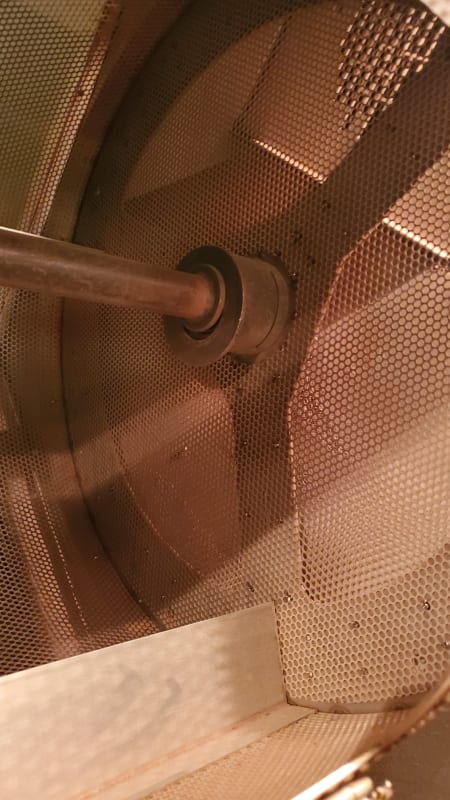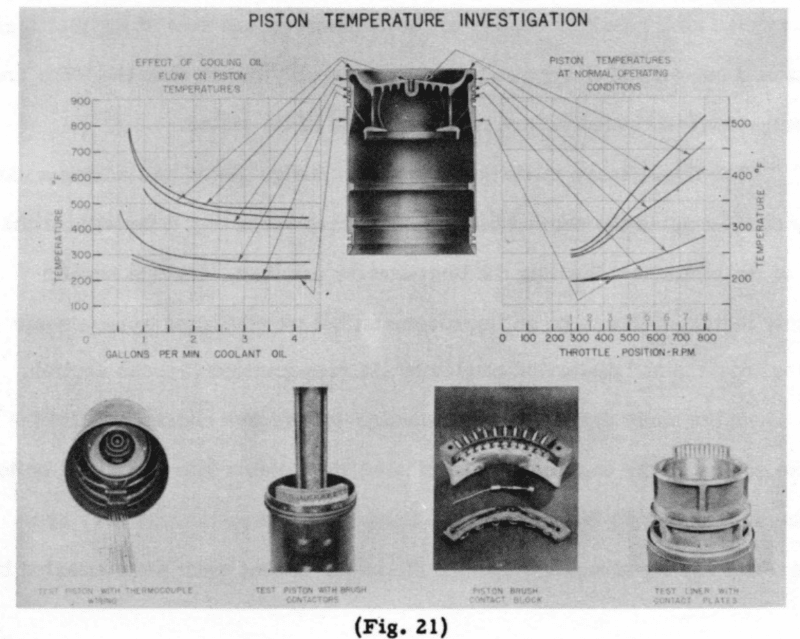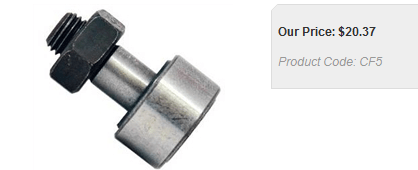danw2; Nice. We'll have to consider this. May be too thick but it might work.
Totally with you on the RTD angle.
btrue; RPM is what you'd see in a meat rotisserie. Maybe 2RPM?
Roasting cycle is about an hour and change.
We want to rest control onto the beans instead of dead reckoned outside the drum air temp and fixed time.
into a hollow shaft for the drum, then down the shaft and outside the oven to a place that is cool or can be cooled
I think this is where we'll have to go. Currently one end of the shaft is gear driven and very technical to get through, like center drilling the 90 degree gearbox shaft. But the non-driven side, while solid, isn't doing much of anything. I think that can be re-tooled to make the center hollow allowing a completely non-rotating solution to present itself.
Yeah an IR mirror! Perhaps a truncated-cone so only the lower edge would be viewed by the thermal imager which would only take the bottom-of-the-drum temperature where the beans will always be..
EdStainless; Yes! We used to do the same thing with rocket fuel mixers and sterilization chambers. Insulate and thermal mass the logger and toss it in. Unfortunately this is a production system that runs about 3 batches over 4 hours and will eventually be longer runs in 7 ovens so I see keeping track of probably 30 thermal loggers with batteries charged and in order as unworkable. They'd also need to get the data out as we need the data realtime to control the roasts.
3DDave; LOL. Crazy waxmotorbean! In about an hour it would probably look like a bean and one would eventually go down process.
I was trying to come up with a bean sampler too! Nasty mechanics.
MacGyverS2000; Permanent installation, yes. It would need to NOT rotate so the bean pile at the bottom of the drum is what's being monitored. They sort of slither up the side 90° then fold-over and slide to the bottom again.
btrue; Not going to work because it turns out the beans come in all sizes and fore instance smaller beans take longer to heat than larger ones because of the resulting interstitial air spaces (the heating medium -air) can't get between them to heat them up. Also a different weight batch shifts everything. Too many variables to do any characterization.
Yay the hollow shaft angle. That's where this looks like it's going. You saying "cantilevered" made me think of actually sitting one end of the drum on two bearings so there is nothing going on with the axle at all. It could be a 4 inch hole! The beans can't get up to the axis ever... hmmm.
Tug; Gadzooks!
Bill; Batch. Any electronics including the ones to make an RF powered simple device would probably have thermal diffusion lifetime problems. Also to drive the RF would require dealing with acres of SS sheetmetal wrappings. Ugh.
Bearings on the ends which had been the chicken rotisserie support system providing three chicken shafts. The drums are custom designed and made so they could be changed. I'm hoping only one exists at this time.
Keith Cress
kcress -






![[smile] [smile] [smile]](/data/assets/smilies/smile.gif) .
.